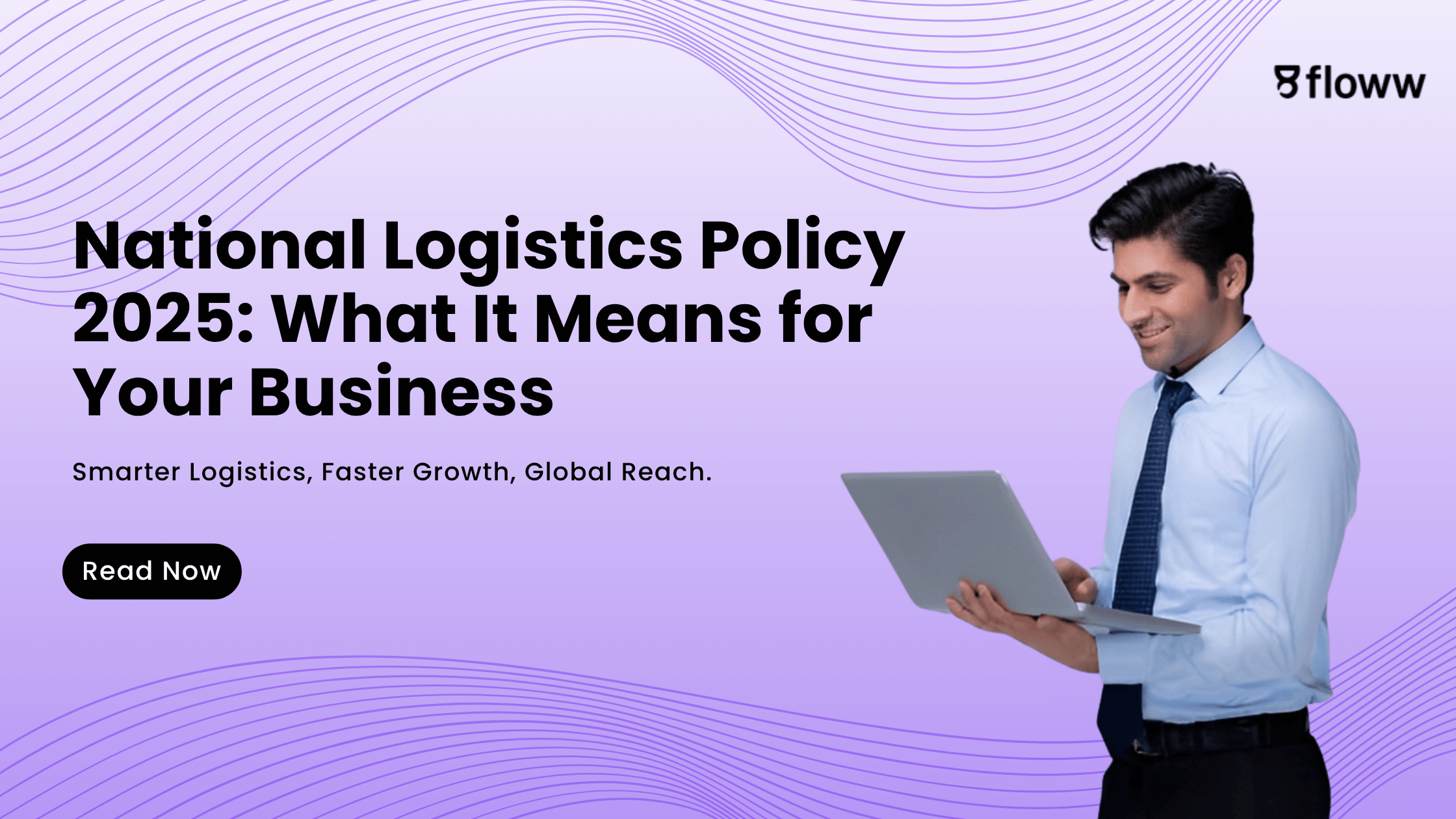National Logistic Policy 2025: A Breakdown For Business Owners
If you run a business in India, logistics isn't just a back-end function anymore. It’s the spine of your growth story. And the National Logistics Policy 2025 (NLP 2025) might just be the support system you didn’t know you needed.

Designed to overhaul how India moves goods, NLP 2025 isn’t just about roads and warehouses. It's about enabling businesses, especially MSMEs, to thrive in a competitive, global market.
Let’s break it all down, minus the jargon. Here’s what business owners like you need to know about the policy that's reshaping the future of logistics in India.
The Need For Unified Vision

Until recently, logistics in India functioned like a jigsaw puzzle with mismatched pieces. Each sector had its own system. Ministries operated in isolation and businesses had to jump through a labyrinth of approvals, costs, and compliance hoops. There was no single vision connecting the dots.
That’s where the National Logistics Policy steps in. By bringing different departments and ministries under one unified framework, the government aims to create a seamless logistics ecosystem. For business owners, this means fewer delays, simplified processes, and better transparency.
What Makes the National Logistics Policy Different?
Most government policies for logistics in the past tackled individual problems in isolation. The NLP 2025, however, treats logistics as a strategic pillar of economic growth. It's holistic, forward-thinking, and deeply integrated with India's digital transformation journey.
Instead of simply reacting to bottlenecks, the policy aims to proactively prevent them by focusing on data, digitisation, and coordination. Think of it as moving from patchwork solutions to a master plan.
Also Read: The 15-minute Email Glow-up
The Four Core Pillars That Hold It All Together

One of the major highlights of the National Logistics Policy is the emphasis on integration. NLP 2025 is built around four key action areas: Digital Integration, Infrastructure Development, Services Improvement, and Human Resource Enhancement. But what do these really mean for a business owner?
Digital Integration means fewer paper trails and more automation. It envisions a Unified Logistics Interface Platform (ULIP), which acts as a one-stop digital window for everything logistics. Businesses that adopt digital tools will find themselves not only compliant but also ahead of the curve.
Infrastructure Development isn’t just about building more roads and railways. It's about building smarter multimodal logistics parks that enable faster movement between air, rail, road, and waterways. If your business depends on supply chain efficiency, this will directly improve your turnaround time.
Services Improvement means encouraging private players to innovate in warehousing, cold storage, freight management, and last-mile delivery. In other words, logistics service providers will be pushed to up their game, which benefits your business directly.
And finally, Human Resource Enhancement acknowledges the skills gap in India’s logistics workforce. The policy promises better training and skilling initiatives, ensuring you have access to a more competent supply chain workforce.
A Big Boost for MSMEs

Smaller businesses often suffer the most when logistics falters. Missed deadlines, high freight costs, and poor inventory management can eat into already thin margins. The National Logistics Policy 2025, however, levels the playing field.
By cutting down logistics costs around 13-14% of GDP, the policy aims to bring India closer to global standards (around 8%). This reduction directly impacts MSMEs, many of whom operate in low-margin environments. A more affordable and predictable logistics network could be the difference between survival and scale.
Moreover, the focus on digital systems like ULIP means MSMEs no longer need massive tech investments to become digitally capable. With access to real-time data, predictive analytics, and simplified compliance, even small players can act big.
Also Read: What is Dearness Allowance in Salary?
Sustainability and Speed Aren't Opposites Anymore

The logistics new policy isn’t just about efficiency; it’s about responsible growth. NLP 2025 also includes green logistics initiatives aimed at reducing carbon emissions. This includes promoting electric vehicles for transport, using energy-efficient warehouses, and building infrastructure with sustainability in mind.
For modern businesses, this is a two-fold win. Not only does a sustainable logistics network reduce your environmental footprint, but it also appeals to a growing market of conscious consumers who prefer brands that walk the talk on responsibility.
The Future of Business
Let’s face it, manual systems are no longer scalable. NLP 2025 pushes for a digitally connected logistics ecosystem, which aligns perfectly with platforms like Atom Suite. Businesses that embrace integrated tools for task management, communication, compliance, and document tracking are naturally better suited to thrive in this new logistics landscape.
Atom Suite’s approach to integrating everyday business workflows fits right into this evolving ecosystem.
Policy Meets Opportunity: How Business Owners Should Prepare

Waiting for policies to take full shape before acting is a lost opportunity. NLP 2025 is already in motion, and early adopters will be the biggest beneficiaries. Start by digitising your supply chain processes. Engage with logistics partners who align with the policy’s vision. And explore digital platforms that simplify operations, documentation, and communication.
The National Logistic Policy is not just about trucks, ports, and warehouses. It’s about data pipelines, platform integrations, and smarter business ecosystems. Those who understand this shift and adapt early are the ones who’ll lead tomorrow.
Final Thoughts: More Than Just a Policy
The National Logistics Policy 2025 isn’t just another government announcement. It’s a signal. A signal that India is serious about becoming a $5 trillion economy, and logistics is its vehicle of choice. For business owners, especially MSMEs, this is an opportunity to plug into a more efficient, cost-effective, and tech-enabled ecosystem.
Instead of playing catch-up, the smartest businesses will ride this wave. And as government policies for logistics evolve, the true winners will be those who don’t just adapt but innovate with the changing tide.
Also Read: How to make a Payslip?

